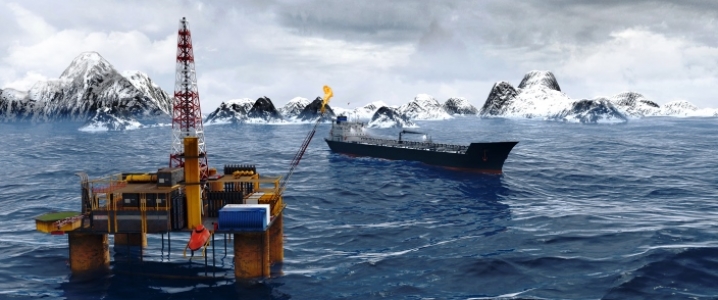When Statoil struck oil in what is now the Johan Castberg field back in 2011, nobody expected that just three years later, oil prices would plummet and the Norwegian energy major would have to apply a lot of ingenuity to make the project viable. Now, it is not just viable, but some see it as the project that will spark a revival of the Norwegian oilfield services industry.
The Johan Castberg field consists of three deposits with combined reserves estimated at between 400 and 650 million barrels of crude. This makes it one of the biggest recent discoveries in Norway’s continental shelf, and the local industry certainly need all of these and then some. After all, field depletion in the North Sea is a very real problem, and Arctic drilling is a challenging and costly endeavor, which, as Statoil saw last year, does not always result in a discovery.
In this context, the Johan Castberg project has become something of a hallmark in the recovery of the local oil industry. Thousands of jobs were lost during the downturn, and now new ones are being created as Statoil prepares for the start of production at Johan Castberg, slated for 2022.
The most recent news around these preparations led to celebrations at the Aker Solutions factory in Sandnessjøen, a northern Norwegian town. The oilfield services provider will deliver the ten subsea templates for the field, which, according to one industry insider, makes it one of the biggest oilfield service contracts in the region in history.
Kjell Giæver, managing director of regional oilfield supplier network Petro Arctic, is upbeat about the future of the industry thanks to Johan Castberg and several more discoveries that are being actively developed. In fact, he is so upbeat that he expects the turnover of goods and services in the industry to jump to US$1.29 billion (10 billion kroner) per year beginning in 2025, from US$770 million (6 billion kroner) in the peak years before the 2014 price slump. Related: New Sanctions On Russia Could Lift Oil Prices Further
One reason for this optimism may be the simple fact that Norway, as green as it is, cannot afford to shut down its oil industry. It still is and will continue to be a major budget revenue source despite the country’s commitment to renewables.
Another is that the last price collapse taught oil majors how to be frugal—and this frugality is paying off by turning previously expensive projects into affordable, viable ones. Again, Johan Castberg is a case in point. Initially, the cost of the project was calculated at US$12.86 billion (100 billion kroner). Now, it has been cut by more than half, to US$6.07 billion (47.2 billion kroner), with production costs per barrel as low as US$31. The project has the backing of the Norwegian government, which last week presented it to parliament for review before the oil ministry gives it the go-ahead.
The ministry also believes Johan Castberg and the other oil and gas discoveries made recently in the Norwegian shelf and the Barents Sea could revive the local oilfield service industry, which is why it is throwing its support behind these projects. But nobody is putting all their eggs in one basket anymore.
Related: Russia Wants To Drop Dollar For Oil Payments
Statoil, while still very active on its home turf, is betting big on Brazil and Mexico for its future production. Aker Solutions and its peers are eyeing expansion into wind energy as the diversification path that makes the most sense for companies with decades of expertise in offshore installations.
So, Johan Castberg—along with several other oil and gas discoveries—could indeed hail in a new era of growth for Norway’s oil producers and suppliers. That field alone is estimated to have a productive life of three decades, which will create a lot of positive spinoff effects for suppliers, according to Giæver and other local industry insiders. But chances are that Aker, Kværner, and the rest of them will continue expanding into non-oil sectors at the same time, just in case.
ADVERTISEMENT
By Irina Slav for Oilprice.com
More Top Reads From Oilprice.com:
- Is OPEC’s Mission ‘’Accomplished’’?
- The World’s Most Profitable Oil Major
- Disaster Hits Canada’s Oil Sands


















